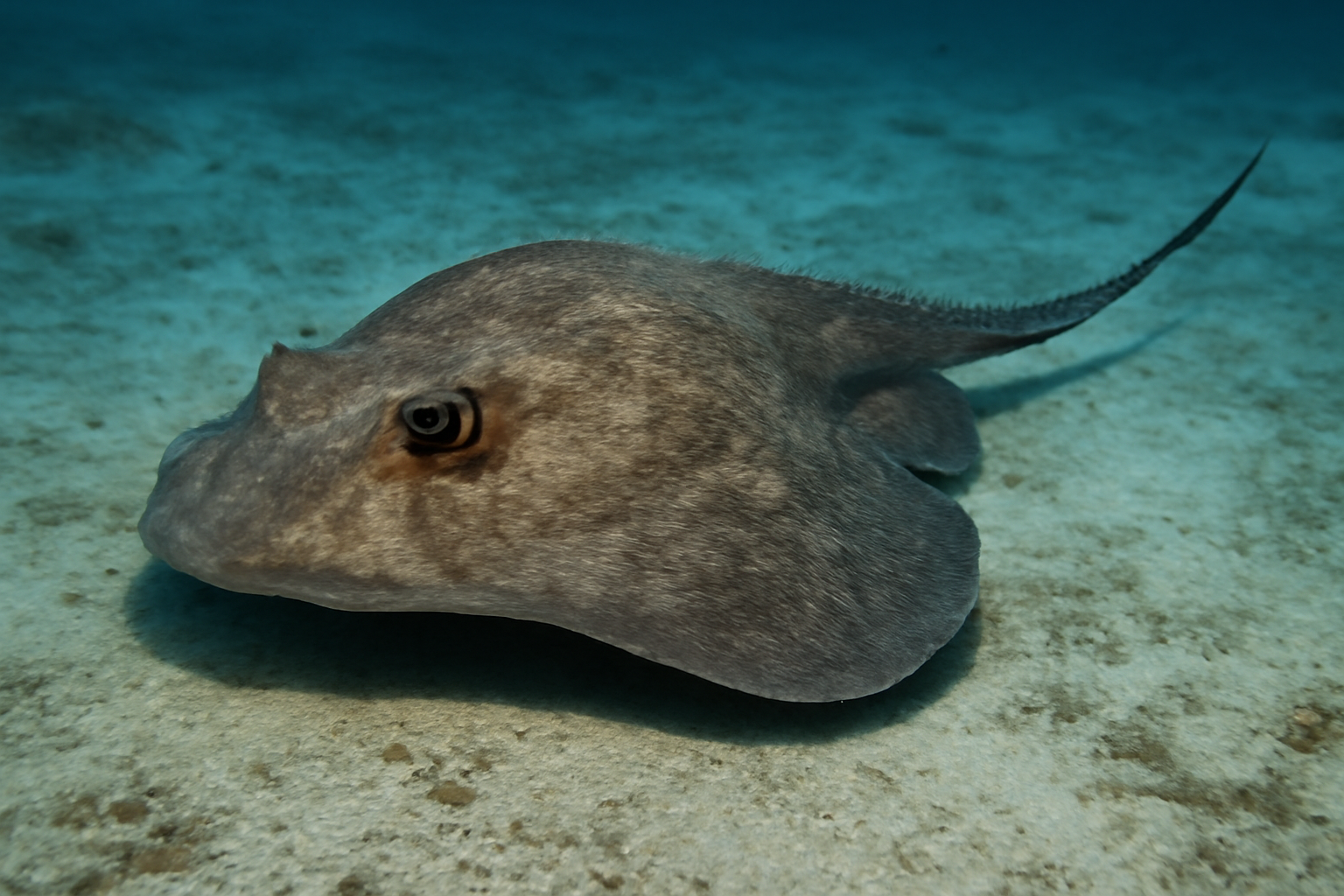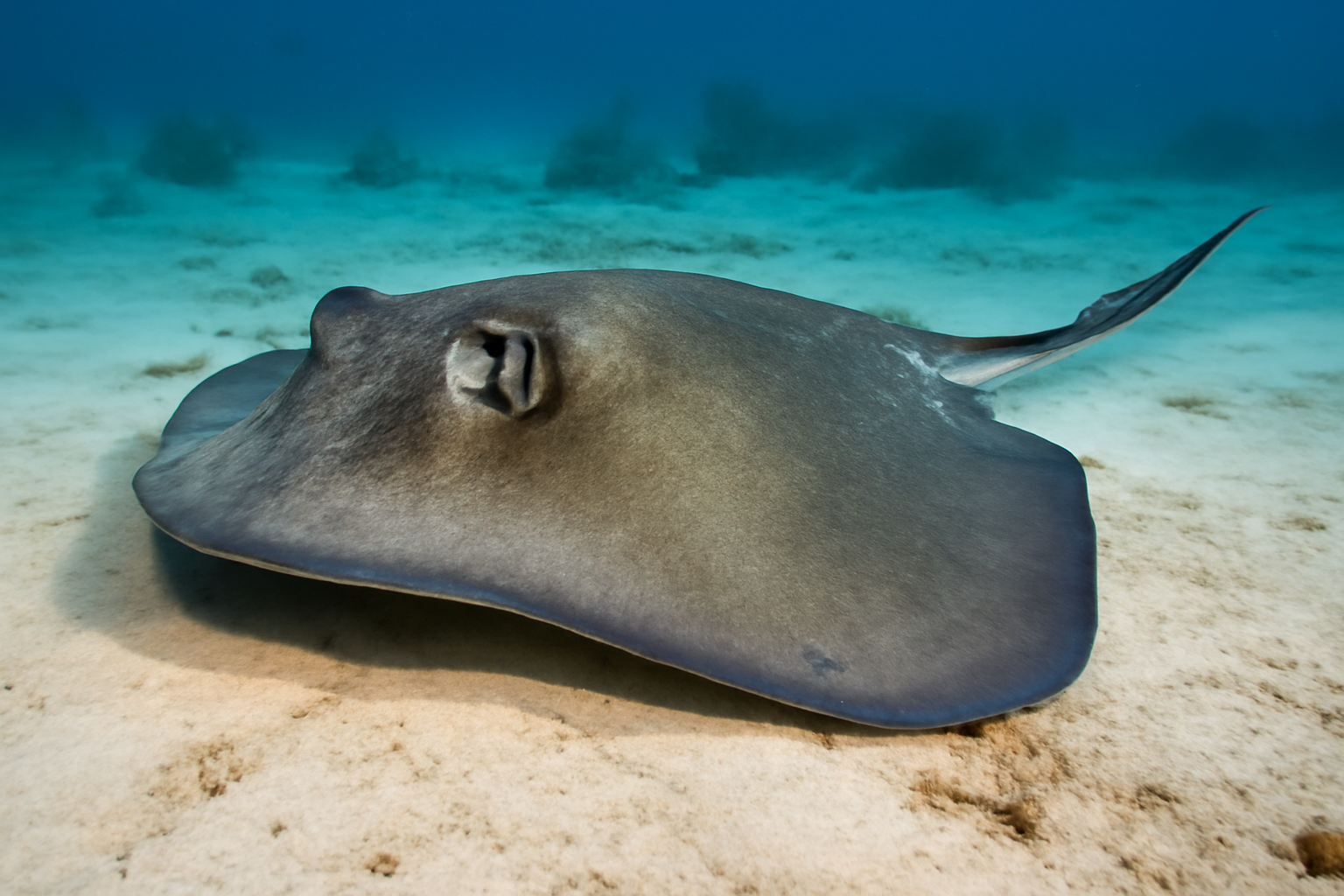Deepwater Stingray [Plesiobatis]
Description
Plesiobatis is the sole genus within the family Plesiobatidae, known commonly as the deepwater stingrays. This genus is characterized by its distinctive body shape, which is adapted to life in deep ocean waters. Members of this genus have a relatively flat and broad disc-like body, which aids in their benthic lifestyle, living close to the ocean floor. Their tails are long, slender, and equipped with a venomous spine, which serves as a defense mechanism against predators. Deepwater stingrays are found in the Indo-Pacific region, from the eastern coast of Africa to the western Pacific Ocean. They inhabit deep waters, often below 200 meters, where they feed on small fish, crustaceans, and mollusks. Their coloration tends to be darker, helping them blend in with the ocean floor. Reproduction in this genus is ovoviviparous, meaning the eggs develop and hatch inside the female's body, and the young are born as miniature adults.
Species

Roughtail Stingray [Bathytoshia centroura]
View Details
Bluntnose Stingray [Dasyatis say]
View Details
Southern Stingray [Hypanus americanus]
View DetailsTaxonomy
| Phylum |
Chordates
Chordata
|
|---|---|
| Class |
Cartilaginous Fish
Chondrichthyes
|
| Order |
Stingrays
Myliobatiformes
|
| Family |
Deepwater Stingrays
Plesiobatidae
|
Statistics
- Species 3